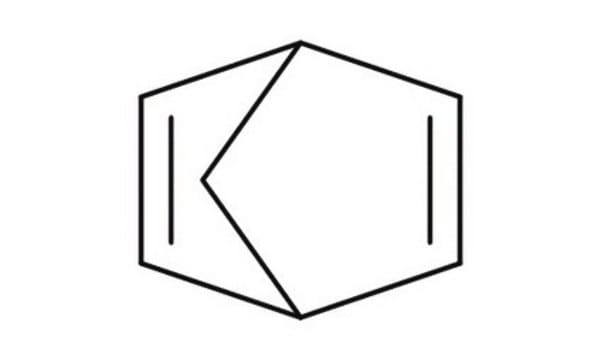479896
Luperox® 231, 1,1-Bis(tert-butylperoxy)-3,3,5-trimethylcyclohexane
92%
Sinónimos:
1,1-Bis(tert-butylperoxy)-3,3,5-trimethylcyclohexane
About This Item
Productos recomendados
Nivel de calidad
Ensayo
92%
índice de refracción
n20/D 1.441 (lit.)
mp
≥50 °C (SADT) (lit.)
densidad
0.904 g/mL at 25 °C
temp. de almacenamiento
2-8°C
cadena SMILES
CC1CC(C)(C)CC(C1)(OOC(C)(C)C)OOC(C)(C)C
InChI
1S/C17H34O4/c1-13-10-16(8,9)12-17(11-13,20-18-14(2,3)4)21-19-15(5,6)7/h13H,10-12H2,1-9H3
Clave InChI
NALFRYPTRXKZPN-UHFFFAOYSA-N
¿Está buscando productos similares? Visita Guía de comparación de productos
Aplicación
Información legal
Palabra de señalización
Danger
Frases de peligro
Consejos de prudencia
Clasificaciones de peligro
Aquatic Chronic 4 - Org. Perox. B
Código de clase de almacenamiento
4.1A - Other explosive hazardous materials
Clase de riesgo para el agua (WGK)
WGK 2
Equipo de protección personal
Eyeshields, Faceshields, Gloves, type ABEK (EN14387) respirator filter
Elija entre una de las versiones más recientes:
¿Ya tiene este producto?
Encuentre la documentación para los productos que ha comprado recientemente en la Biblioteca de documentos.
Los clientes también vieron
Nuestro equipo de científicos tiene experiencia en todas las áreas de investigación: Ciencias de la vida, Ciencia de los materiales, Síntesis química, Cromatografía, Analítica y muchas otras.
Póngase en contacto con el Servicio técnico





![Bicyclo[2.2.1]hepta-2,5-diene 98%](/deepweb/assets/sigmaaldrich/product/structures/304/819/dfa7c176-c370-4fb5-acf1-28d751241a50/640/dfa7c176-c370-4fb5-acf1-28d751241a50.png)





